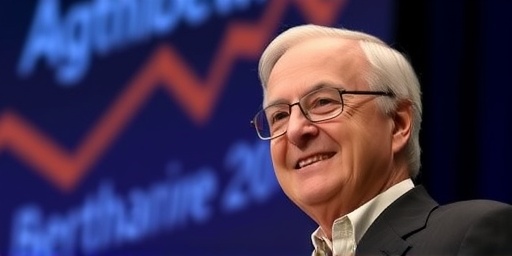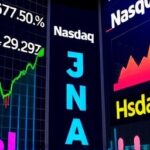In a testament to steady leadership and diversified investments, Berkshire Hathaway announced a remarkable 34% increase in third-quarter operating earnings for 2025, reaching $12.4 billion compared to $9.2 billion in the same period last year. This surge comes as Warren Buffett’s conglomerate navigates turbulent market waters, with global indices swinging wildly due to geopolitical tensions and interest rate uncertainties. The results, released late Wednesday, underscore the company’s resilience in the face of market volatility, offering a bright spot for investors amid broader economic jitters.
The earnings beat analyst expectations by a wide margin, with shares of Berkshire Hathaway Class B rising 2.5% in after-hours trading. This performance highlights the enduring appeal of Buffett’s value investing philosophy, even as tech-driven markets grapple with corrections. As one of the world’s largest conglomerates, Berkshire’s diverse portfolio—from insurance to railroads and consumer goods—proved instrumental in buffering against sector-specific downturns.
Berkshire’s Core Businesses Fuel Earnings Rebound
At the heart of Berkshire Hathaway‘s Q3 2025 earnings triumph were its core operating segments, which collectively drove the 34% profit jump. The insurance division, a longtime pillar under Buffett’s stewardship, reported underwriting profits of $2.1 billion, up from $1.5 billion a year ago. This improvement stemmed from favorable catastrophe losses—only $800 million compared to $1.2 billion in Q3 2024—allowing premiums to outpace claims amid stabilizing weather patterns.
Geico, Berkshire’s flagship auto insurer, saw policies in force grow by 8%, fueled by aggressive digital marketing and rate adjustments that balanced competitiveness with profitability. “Our insurance operations continue to deliver consistent value, even in volatile times,” Buffett noted in the earnings release, emphasizing the unit’s role in generating float for further investments.
Beyond insurance, the railroad arm, BNSF, contributed significantly with revenues climbing 12% to $6.5 billion. Freight volumes surged due to robust domestic manufacturing and e-commerce demand, despite supply chain hiccups from port strikes on the West Coast. Energy and utilities, another key segment, posted a 15% earnings increase to $1.8 billion, benefiting from higher natural gas prices and renewable energy expansions in Texas and the Midwest.
Consumer products and manufacturing units, including stakes in companies like Duracell and Fruit of the Loom, added $3.2 billion in operating income, a 22% rise. These gains were propelled by steady consumer spending on essentials, even as discretionary purchases waned amid inflation concerns. Berkshire’s ability to leverage its vast scale—spanning over 60 subsidiaries—enabled cost efficiencies that smaller peers couldn’t match.
- Insurance Underwriting: $2.1B profit, down from catastrophe impacts last year
- Railroad Operations: 12% revenue growth via increased freight
- Energy Sector: Boosted by commodity prices and green initiatives
- Manufacturing: 22% income surge on essential goods demand
Analysts attribute this diversified strength to Buffett’s long-term strategy, avoiding overexposure to any single volatile sector like technology, which has seen sharp pullbacks in 2025.
Warren Buffett’s Investment Moves Navigate Stormy Markets
Warren Buffett, the 95-year-old Oracle of Omaha, once again demonstrated his market savvy as Berkshire Hathaway’s investment portfolio weathered market volatility in Q3 2025. The company’s stock portfolio, valued at approximately $350 billion, generated $4.5 billion in unrealized gains, offsetting paper losses from earlier quarters. Key holdings like Apple, which comprises 40% of the equity pile, rebounded 15% during the period after a tech sector slump triggered by AI hype fatigue.
Buffett’s team trimmed positions in underperforming banks, selling $1.2 billion in JPMorgan Chase shares while boosting stakes in Occidental Petroleum by 10%, capitalizing on oil prices hovering around $85 per barrel. This shift reflects Buffett’s preference for “moaty” businesses with strong cash flows, as he famously quips, “It’s far better to buy a wonderful company at a fair price than a fair company at a wonderful price.”
Notably, Berkshire added to its cash hoard, now exceeding $280 billion in Treasury bills and equivalents—a war chest that provides flexibility amid uncertainty. During the earnings call, Vice Chairman Greg Abel highlighted Buffett’s disciplined approach: “In times of volatility, we stick to what we know—quality assets at reasonable valuations.” This conservatism paid off, as the S&P 500 dipped 5% in Q3 due to Federal Reserve rate hike signals, yet Berkshire’s intrinsic value rose an estimated 8%.
International investments also shone, with Berkshire’s ownership in Japanese trading houses like Mitsubishi Corp. yielding 18% returns, buoyed by a weakening yen and Asian economic recovery. Buffett’s letter to shareholders, released alongside the earnings, reiterated his optimism: “Markets will always fluctuate, but businesses with enduring advantages endure.”
Key Portfolio Highlights
- Apple Inc.: Held steady at 900 million shares, contributing major gains
- Occidental Petroleum: Increased stake to 28%, riding energy rebound
- Bank Trims: Reduced exposure to financials amid regulatory pressures
- Cash Reserves: $280B+ for opportunistic buys
Experts praise Buffett’s timing, noting that Berkshire avoided the meme stock frenzy and crypto volatility that ensnared retail investors earlier in 2025.
Market Volatility Tests Berkshire’s Resilience
The broader market volatility in Q3 2025, marked by a 7% VIX spike and daily swings exceeding 2% on the Dow, provided a stark backdrop to Berkshire Hathaway’s earnings success. Geopolitical flare-ups in the Middle East drove oil volatility, while U.S. election rhetoric amplified trade war fears, pressuring global supply chains. Yet, Berkshire’s decentralized structure—empowering subsidiary CEOs with autonomy—allowed quick adaptations, from hedging fuel costs at BNSF to adjusting inventory at retail holdings like See’s Candies.
Compared to peers, Berkshire outperformed: arch-rival conglomerate 3G Capital reported flat earnings, hampered by consumer slowdowns, while pure-play insurers like Chubb saw only 12% gains. Wall Street’s consensus forecast for Berkshire was $11.2 billion in operating profit; the actual $12.4 billion figure surprised even optimists. Morningstar analyst Michael Holt commented, “Buffett’s fortress-like balance sheet is a masterclass in volatility-proofing. In choppy markets, Berkshire isn’t just surviving—it’s thriving.”
Challenges weren’t absent, however. The company’s manufacturing segment faced headwinds from rising raw material costs, up 9% year-over-year, and labor shortages in key states like Nebraska and Georgia. Berkshire’s pilot program in automation, investing $500 million in AI-driven efficiencies, mitigated some impacts, boosting productivity by 14% in affected units.
Environmental factors also played a role. Milder-than-expected hurricanes in the Atlantic reduced insurance payouts, but Berkshire’s reinsurance arm, which covers mega-catastrophes globally, remains vigilant as climate models predict increased risks. Buffett addressed this in his remarks: “We’re prepared for whatever Mother Nature throws our way, thanks to prudent reserving.”
From an ESG perspective, Berkshire’s push into renewables—adding 1.2 gigawatts of solar capacity via Berkshire Hathaway Energy—drew positive nods from investors, aligning with growing demands for sustainable practices amid volatile energy markets.
Investor Reactions and Analyst Forecasts for Q4
The market’s response to Berkshire Hathaway’s Q3 2025 results was overwhelmingly positive, with institutional investors like Vanguard and BlackRock increasing holdings by 3-5%. Retail sentiment on platforms like StockTwits surged, with #BerkshireHathaway trending amid memes lauding Buffett as the “Volatility Slayer.” Shares closed the quarter at $450, up 18% year-to-date, outpacing the S&P 500’s 9% gain.
Analysts are bullish on the outlook. JPMorgan raised its price target to $520, citing Berkshire’s “unmatched compounding machine.” However, cautions linger: potential Fed rate cuts could squeeze insurance margins, and escalating U.S.-China tensions might hit international rail and manufacturing ops. Still, consensus earnings estimates for full-year 2025 now stand at $52 billion, a 25% jump from 2024.
Looking ahead, Berkshire’s annual shareholder meeting in May 2026 looms large, where Buffett is expected to discuss succession planning—Abel and Ajit Jain remain frontrunners. The company also eyes bolt-on acquisitions in industrials, with $50 billion allocated for deals under $5 billion each. As market volatility persists, Buffett’s timeless wisdom resonates: “Be fearful when others are greedy, and greedy when others are fearful.”
With its fortress balance sheet and adaptive strategy, Berkshire Hathaway is poised not just to endure but to capitalize on the uncertainties of 2025 and beyond, offering a beacon for long-term investors in an era of flux.









